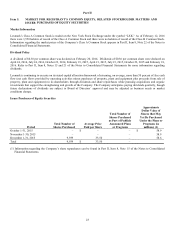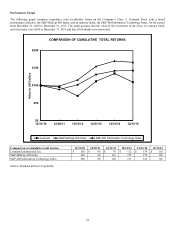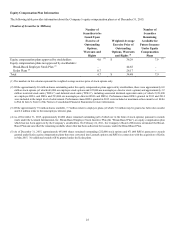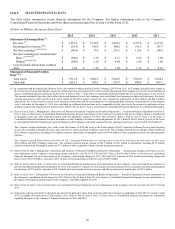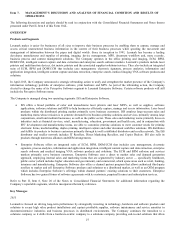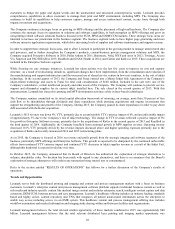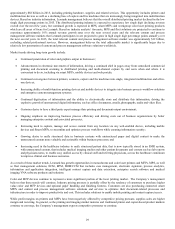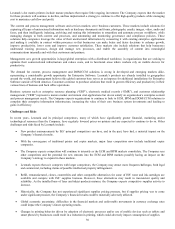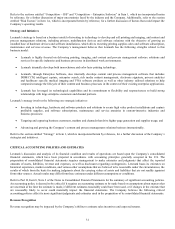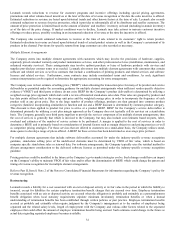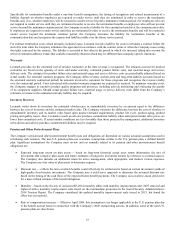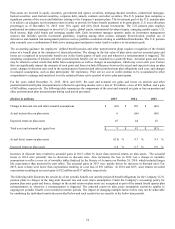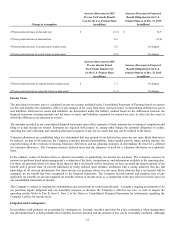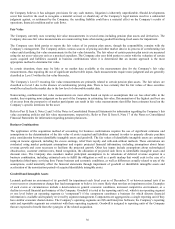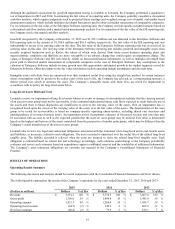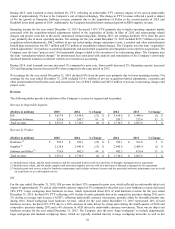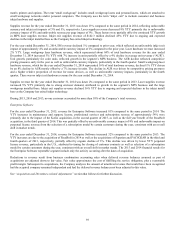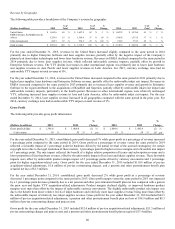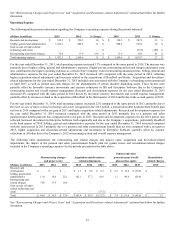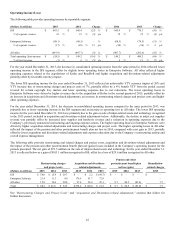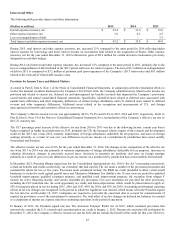Lexmark 2015 Annual Report Download - page 37
Download and view the complete annual report
Please find page 37 of the 2015 Lexmark annual report below. You can navigate through the pages in the report by either clicking on the pages listed below, or by using the keyword search tool below to find specific information within the annual report.33
Specifically for termination benefits under a one-time benefit arrangement, the timing of recognition and related measurement of a
liability depends on whether employees are required to render service until they are terminated in order to receive the termination
benefits and, if so, whether employees will be retained to render service beyond a minimum retention period. For employees who are
not required to render service until they are terminated in order to receive the termination benefits or employees who will not provide
service beyond the minimum retention period, the Company records a liability for the termination benefits at the communication date.
If employees are required to render service until they are terminated in order to receive the termination benefits and will be retained to
render service beyond the minimum retention period, the Company measures the liability for termination benefits at the
communication date and recognizes the expense and liability ratably over the future service period.
For contract termination costs, which primarily includes leases, Lexmark records a liability for costs to terminate a contract before the
end of its term when the Company terminates the agreement in accordance with the contract terms or when the Company ceases using
the rights conveyed by the contract. The liability is recorded at fair value in the period in which it is incurred, taking into account the
effect of estimated sublease rentals that could be reasonably obtained which may be different than company-specific intentions.
Warranty
Lexmark provides for the estimated cost of product warranties at the time revenue is recognized. The amounts accrued for product
warranties are based on the quantity of units sold under warranty, estimated product failure rates, and material usage and service
delivery costs. The estimates for product failure rates and material usage and service delivery costs are periodically adjusted based on
actual results. For extended warranty programs, the Company defers revenue in short-term and long-term liability accounts (based on
the extended warranty contractual period) for amounts invoiced to customers for these programs and recognizes the revenue ratably
over the contractual period. Costs associated with extended warranty programs are expensed as incurred. To minimize warranty costs,
the Company engages in extensive product quality programs and processes, including actively monitoring and evaluating the quality
of its component suppliers. Should actual product failure rates, material usage or service delivery costs differ from the Company’s
estimates, revisions to the estimated warranty liability may be required.
Inventory Reserves
Lexmark writes down its inventory for estimated obsolescence or unmarketable inventory by an amount equal to the difference
between the cost of inventory and the estimated market value. The Company estimates the difference between the cost of obsolete or
unmarketable inventory and its market value based upon product demand requirements, product life cycle, product aging, product
pricing and quality issues. Also, Lexmark records an adverse purchase commitment liability when anticipated market sales prices are
lower than committed costs. If actual market conditions are less favorable than those projected by management, additional inventory
write-downs and adverse purchase commitment liabilities may be required.
Pension and Other Postretirement Plans
The Company’s pension and other postretirement benefit costs and obligations are dependent on various actuarial assumptions used in
calculating such amounts. The non-U.S. pension plans use economic assumptions similar to the U.S. pension plan, a defined benefit
plan. Significant assumptions the Company must review and set annually related to its pension and other postretirement benefit
obligations are:
Expected long-term return on plan assets — based on long-term historical actual asset return information, the mix of
investments that comprise plan assets and future estimates of long-term investment returns by reference to external sources.
The Company also includes an additional return for active management, when appropriate, and deducts various expenses.
The Company uses fair value of plan assets to determine expense.
Discount rate — reflects the rates at which benefits could effectively be settled and is based on current investment yields of
high-quality fixed-income investments. The Company uses a yield-curve approach to determine the assumed discount rate
based on the timing of the cash flows of the expected future benefit payments. The Company uses an above-mean yield curve
for a more refined estimate of the benefit obligation.
Mortality – based on the Society of Actuaries RP-2014 mortality tables with mortality improvements after 2007 removed and
replaced with a mortality improvement scale based on the intermediate projection in the Social Security Administration’s
2014 Trustees Report. The Company considered the updated mortality improvements scale issued in 2015, but found the
effect was not material.
Rate of compensation increase — Effective April 2006, this assumption is no longer applicable to the U.S. pension plan due
to the benefit accrual freeze in connection with the Company’s 2006 restructuring actions. In addition, some of the non-U.S.
pension plans are also frozen.


